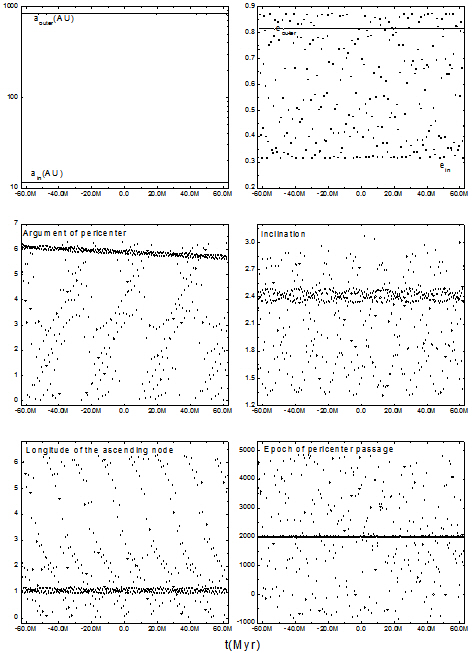The triple star HIP 102589 is composed of a bright binary and a quite distant component. And it is the brightest source situated at the center of a ∼3 square degree field of view. Therefore, it is of practical interest to precisely predict the position as a navigational reference point. By fitting the simple double two-body model and the accurate three-body model to observational data, the dynamical state (component masses and kinematic parameters) of this system is redetermined. In figure 1, inner and outer orbital motions of HIP 102589 are shown. Though the precision-weighted sum of squared residuals calculated from our results with both models are significantly smaller than the previous ones, only the result with the three-body model is statistically acceptable according to the goodness-of-fit test.

Figure. 1. Inner and outer orbital motions of HIP 102589.
The forward and backward long-term dynamical evolutions are numerically explored on the timescale of an estimated age of the components. It is found that the three-body system remains integrated and its hierarchical configuration keeps unchanged since the formation of the components, despite the fact that the instantaneous double two-body orbits vary significantly(see figure 2).

BY with XIA Fang
Figure 2. Time variations of the instantaneous orbital elements.
The possibility that the most massive component is itself a tightly bounded binary is discussed based on the redetermined mass and a stellar empirical mass–luminosity relation.
This work by Fang, Xia and Yan-Ning Fu has been published in The Astrophysical Journal. This research is supported by the National Natural Science Foundation of China under Grant Nos. 11178006 and11203086. Please see the Astrophysical Journal, Volume 814, Issue 1, article id. 64 for more details. (http://adsabs.harvard.edu/abs/2015ApJ...814...64X)
